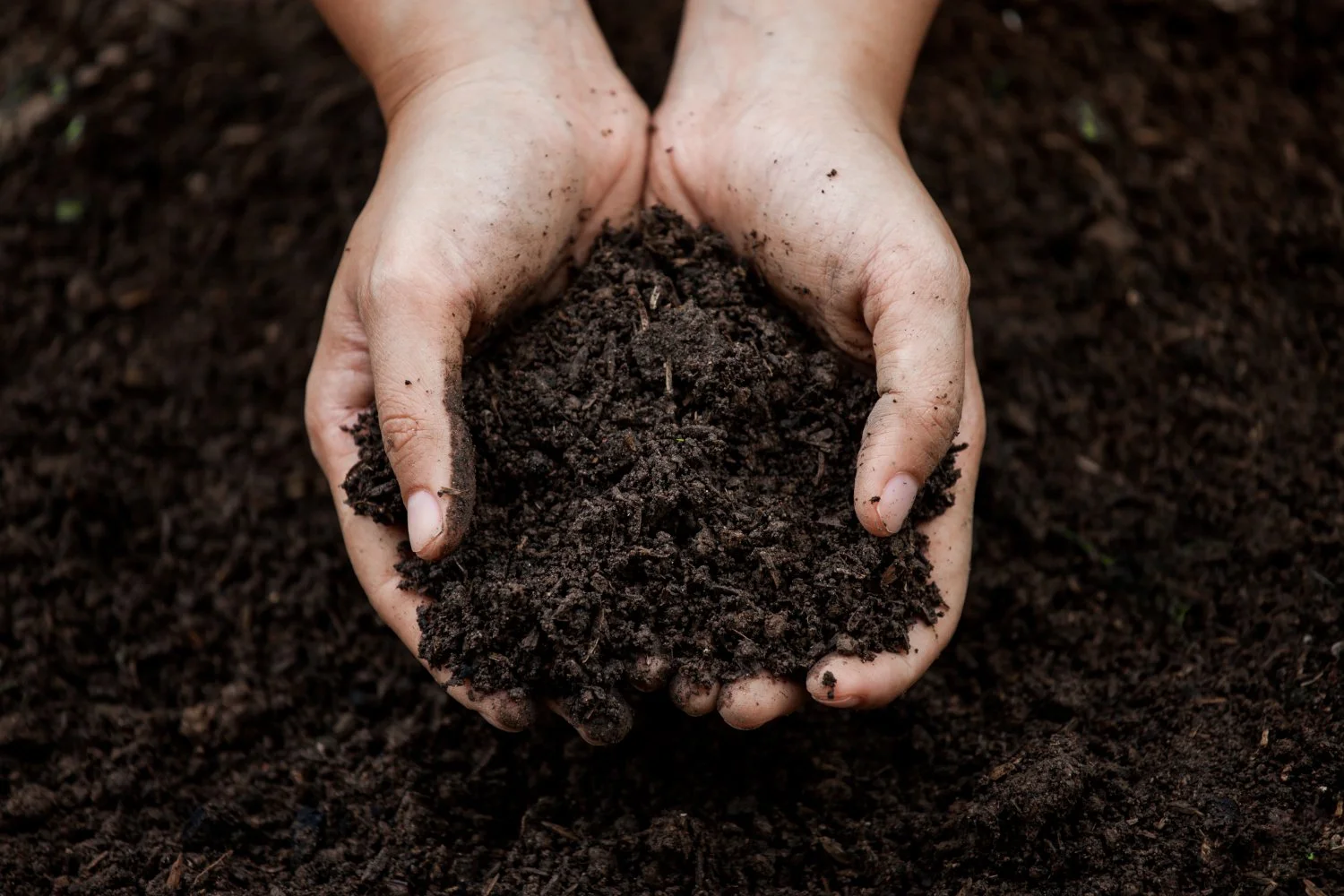March 2024
Flowers are wonderful! They are the perfect gift for many occasions, making our surroundings cheery. They delight us with their colours, smell good, and remind us that nature is a beautiful creation.
However, frequent replacement, imprudent treatment and inappropriate disposal can burden the environment.
Here, we have collected some tips to help you get started with a more sustainable approach to enjoying flowers.
WHAT ARE SUSTAINABLE FLOWERS?
Flowers are considered sustainable when they are:
Seasonal - growing during a specific time, following their natural life cycle.
Locally grown - being sold and planted near where they were initially produced.
Organically produced - grown without the use of chemical pesticides and fertilisers.
LEARN FROM THE EXPERTS
Buying sustainable flowers and caring for them in an environmentally friendly way requires some knowledge.
Here are some first sources to help you kickstart your journey as a green plant keeper.
Slow Flowers movement
Florists' Review Magazine
The Association of Specialty Cut Flower Growers
"The Flower Farmer's Year" by Georgie Newbery
"The Flower Workshop" by Ariella Chezar
On Instagram check out, for example: sustainablefloristryalliance, sustainablefloristry, sustainableflorist, and floretflower.
Ask your local nature conservancy organisation for more reliable sources. Don’t forget to check specialist literatures bibliography for further sources.
SHOPPING FOR SUSTAINABLE FLOWERS
Always opt for local, domestic, and seasonal flowers when shopping. Certificates will help you spot sustainable flowers from local sources and other countries. And if you enjoy gardening, homegrown flowers may be a sustainable option.
LOCAL SHOPS
Get your flowers from local florists rather than ordering them online from giant retailers.
This way, we support our local florists and the local economy.
Ask for flowers from their in-house greenery to help reduce carbon emissions, as the flowers don’t have to be transported over long distances.
Refuse packing your flowers in single-use plastic. Ask to wrap them in old newspapers instead or bring some reused wrapping paper from home.
DOMESTIC FLOWERS
Choose domestic flowers. When choosing domestic flowers, you support
the cultivation and the diversity of local plant types.
our native fauna by providing it with food sources.
nurseries cultivating old species and hence contributing to retaining our regional plant heritage
the maintenance of Biodiversity →.
And, of course, it is fun and exciting to learn about the different kinds of domestic flowers that grow in our region.
How to figure out which flowers are domestic in your area?
Browse the web for keywords, such as ‘hardiness zones’, ‘climate zones’, ‘growing zones’ and ‘gardening zones’ in the context of house plants to learn about flowers native to your region.
Platforms like the Fantastic Gardeners Blog provide an overview of domestic flowers sorted according to climate zones, while on Wikipedia, you can find domestic flowers sorted by region.
If you want to actively participate in learning about and spotting domestic flowers in your area, join organisations like Project Noah. The organisation asks citizens to support collecting data on domestic wildlife by spotting domestic flowers in their area.
SEASONAL FLOWERS
Pick flowers that are in season. It can be tricky always to have seasonal flowers, as many of us live in areas with varying seasons, and most flowers do not grow in the cold.
During winter, consider using branches with berries, pinecones, and dried flowers as excellent alternatives to fresh flowers.
Some helpful calendars provide information on which flowers grow each month or season.
Browse the web to find a seasonal calendar for your country or region, such as from flowers.org (please see our bibliography at the end of this manual entry).
LABELS & CERTIFICATIONS
To support environmental protection and fair production conditions when purchasing flowers, look for sustainability and fair trade certifications. By doing so, you support sustainable farming and production practices.
ORGANICALLY GROWN FLOWERS
Similarly to food, strict cultivation regulations apply to organic houseplants. For example, no synthetic fertilisers or pesticides can be used.
However, finding organic plants is not easy—interest in them has not yet been as strong as it has been in Organic Food →. You will likely find them at weekly markets, specialised nurseries, farm shops, and Organic Stores →.
Identify organically grown houseplants by checking to see if they carry appropriate organic certifications.
FAIRTRADE FLOWERS
If you want to buy plants that are not in season and must be imported, choose fair trade products. A fair trade certification implies that the employees work under better conditions.
Nurseries that produce fair trade options also use more sustainable growing practices, such as resource-saving irrigation and the restricted use of pesticides.
Some certification bodies include LEAF, GGN (extension of Global GAP), Rainforest Alliance, etc.
DIY: GROWING FLOWERS
Growing flowers can be a rewarding hobby with many positive effects.
HOBBY & DECORATION - Growing flowers is a meditative activity. It is also a simple way to decorate your four walls in a varied and natural way.
FOOD & GIFTS - Extra value: Plants such as calendula or flax are easy to grow, undemanding, and edible - making them a great sustainable and personal gift or souvenir.
LEARN FROM THE EXPERTS
Browse the web for tutorials and tips. “The Spruce” is a beginner’s guide on how to grow flowers from seed to help you get started.
Check your local library for beginner garden literature targeted to your climate zone and possibilities.
MAKING FLOWERS LAST
Even if your flowers are not sustainably produced, do not worry. You can still improve their impact through the way you treat them. This includes:
First, learn about your flowers and their needs. Then, get started by checking out the sources we provide above.
Opt for environmentally friendly pesticides and fertilisers.
Make prudent use of water and soil.
Apply organic fertilisers.
Good practices that prolong their lifespan.
ENVIRONMENT
Learn about your flower needs. The more we follow each plant’s unique needs, the better potential lifespan and quality we offer it.
Ensure you do not overcrowd them in the vase and keep them away from fruits, as the latter may emit ethylene gas (bananas, for example), which promotes ripening and might negatively affect the preservation of your flowers.
FRESHWATER & STEM CUTTING
For most cut flowers, a daily change of water and stem cutting will help keep them fresh and allow them to last several days or up to a week longer.
FLOWER PRESERVATIVES & NUTRITION
Adding homemade flower preservatives can help your cut flowers survive more days in full blossom. Adding sugar, vodka, vinegar, aspirin, or coins are just a few recommendations.
Browse the web for some easy recipes you can whip up at home, and check our bibliography ↓ for more info. Easy-to-make recipes:
1 teaspoon sugar, 1 teaspoon household bleach, 2 teaspoons lemon or lime juice, per litre of warm water
1 tablespoon sugar, ¼ teaspoon bleach per litre of warm water.
2 tablespoons sugar, 2 tablespoons of either lemon juice or vinegar per litre of warm water.
2 tablespoons sugar, 2 tablespoons white vinegar, ½ teaspoon household bleach per litre of warm water.
1 tablespoon sugar, 2 tablespoons fresh lemon juice or vinegar, 1/2 teaspoon household chlorine bleach per litre of warm water.
2 cups lemon-lime carbonated beverage (e.g., Sprite or 7-Up), 1/2 teaspoon household chlorine bleach, 2 cups warm water
For all recipes, stir until the sugar dissolves, and let the water cool before adding the flowers.
Refresh it every few days.
REPURPOSING FLOWERS
There are endless ideas for enjoying the beauty and usefulness of flowers well beyond their lifetime.
Browse the web for inspiring DIY tips on reusing cut flowers. Here are some ideas to help you get started.
Check our bibliography ↓ for Darcy Flowers to get more details:
Dry your withered flowers or greenery, and create a dried bouquet.
Make homemade potpourri
Homemade dried flower body scrub
DIY ombre light feature
Make pressed flower art
Scented room spray
Decorative accent for a gift
Elevate a clear cell phone case
COMPOSTING DEAD FLOWERS
If you must dispose of your flowers, remember they belong to organic waste.
However, if they have been treated with pesticides or insecticides, they must go into household waste - unfortunately, this is the case for most flowers.
Do you have a compost? Add your withered flowers, considering the following:
Separate any possible decorative details, such as ribbons and wires, as these are not organic materials and can not be composted.
Shred the flowers into smaller pieces to ensure a quicker decomposition process.
Do not add thorny stems, bulbs, corms and tubers, as hard parts take up to two years to decompose and can slow the decomposition process.
Add only healthy flowers to the compost. Diseased or infected flowers can be a severe source of contamination for the future plants to which you add your compost.
Do not add flowers treated with toxic herbicides to your compost to the crops where the compost is applied.
Add vase water from cut flowers to the compost heap as long as no commercial preservatives are added.
Learn more
Check our sources: Bibliography →






















